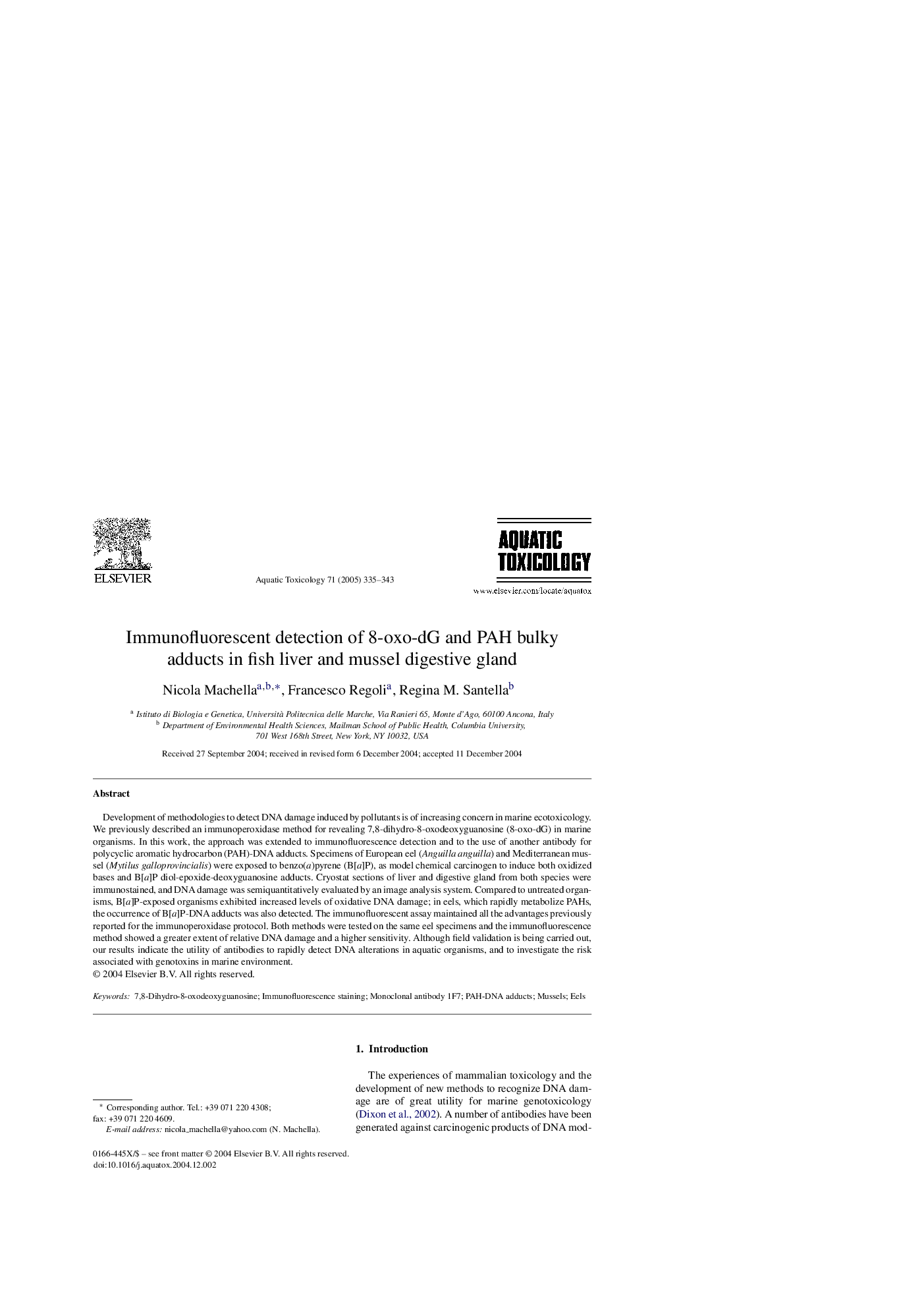| Article ID | Journal | Published Year | Pages | File Type |
|---|---|---|---|---|
| 9478333 | Aquatic Toxicology | 2005 | 9 Pages |
Abstract
Development of methodologies to detect DNA damage induced by pollutants is of increasing concern in marine ecotoxicology. We previously described an immunoperoxidase method for revealing 7,8-dihydro-8-oxodeoxyguanosine (8-oxo-dG) in marine organisms. In this work, the approach was extended to immunofluorescence detection and to the use of another antibody for polycyclic aromatic hydrocarbon (PAH)-DNA adducts. Specimens of European eel (Anguilla anguilla) and Mediterranean mussel (Mytilus galloprovincialis) were exposed to benzo(a)pyrene (B[a]P), as model chemical carcinogen to induce both oxidized bases and B[a]P diol-epoxide-deoxyguanosine adducts. Cryostat sections of liver and digestive gland from both species were immunostained, and DNA damage was semiquantitatively evaluated by an image analysis system. Compared to untreated organisms, B[a]P-exposed organisms exhibited increased levels of oxidative DNA damage; in eels, which rapidly metabolize PAHs, the occurrence of B[a]P-DNA adducts was also detected. The immunofluorescent assay maintained all the advantages previously reported for the immunoperoxidase protocol. Both methods were tested on the same eel specimens and the immunofluorescence method showed a greater extent of relative DNA damage and a higher sensitivity. Although field validation is being carried out, our results indicate the utility of antibodies to rapidly detect DNA alterations in aquatic organisms, and to investigate the risk associated with genotoxins in marine environment.
Related Topics
Life Sciences
Agricultural and Biological Sciences
Aquatic Science
Authors
Nicola Machella, Francesco Regoli, Regina M. Santella,
